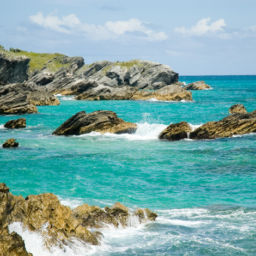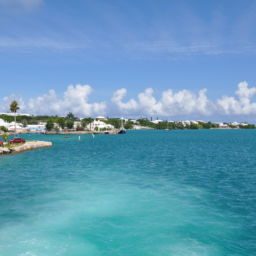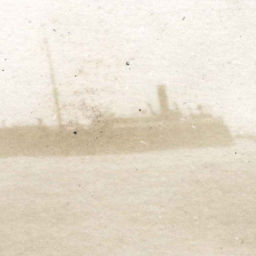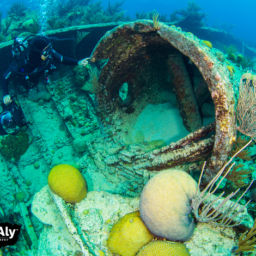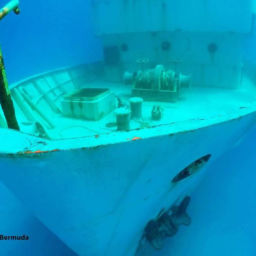By guest blogger Mark Diel
Bermuda shipwrecks are well known, and this dive site gives divers a 2-for-1: although they sank almost 100 years apart, the wrecks of the Montana and Constellation are literally on top of each other, some four miles to the northwest of the island.
Two Bermuda Shipwrecks For One
The first wreck is the Montana, which was a Civil War blockade runner — similar to the Mary Celestia, which also sank in Bermuda waters. As was typical among blockade runners, these ships often operated under different names, hoping to confuse the enemy. This ship’s aliases included the Nola, Gloria, Paramount and Montana. Highly successful, the ship made numerous trips between England, Bermuda and North Carolina. Built in England, this sleek and fast — for its time — 236-foot paddlewheel steamer could run at a speed of 15 knots.
Like the Mary Celestia, Bermuda’s treacherous reefs were the ship’s undoing. Approaching Bermuda near the end of 1863, having traveled from England and hammered by winter storms, the Montana missed the easiest approaches to St. George’s harbor and tried to pick its way through Bermuda’s reefs from the north. This turned out to be an unwise decision as the ship hit the reefs and sank in shallow water between 20 and 30 feet deep. Although the crew and much of its valuable cargo escaped unscathed, nothing could be done for the Montana, which had a 10-foot-long hole in its hull below the waterline. Today, the scattered wreckage lies in a maximum depth of 30 feet of water in the middle of a large sand valley, surrounded by high coral heads. The ship’s bow is still relatively intact and heavily encrusted with coral. At low tide, its boilers and paddlewheels almost break the surface.
The second ship to meet its fate nearby was the wooden-hulled, 4-masted schooner the Constellation, which was built in 1918 and measured 192 feet long. The demand for ships became enormous with the outbreak of World War II, and so the Constellation, after a number of transformations, ended up in New York for conversion into a cargo vessel.
In July 1943, it was en route from New York to Venezuela, carrying a general cargo of building materials, medicinal drugs (in particular morphine ampules) and 700 cases of Scotch (Johnny Walker) whiskey. Not long after clearing New York, the ship began to take in water with the weather getting increasingly rough.
The crew struggled to keep the ship afloat, eventually resorting to hand pumps. Although this lasted for days, they could not keep pace with the water leaking into the doomed ship. It was decided to head towards Bermuda for repairs. On July 30, 1943, while waiting for a local pilot, the ship was driven onto the same reef as the Montana, where it rapidly sank given the state it was in by that time.
The Constellation’s cargo lies scattered over the bottom in around 30 feet of water, and includes assorted bottles, slates for pool tables, ceramics, crucifixes and, of course, the infamous ampoules. If this sounds somewhat familiar, it’s perhaps because Peter Benchley based his novel The Deep, set in Bermuda, on these two shipwrecks.


